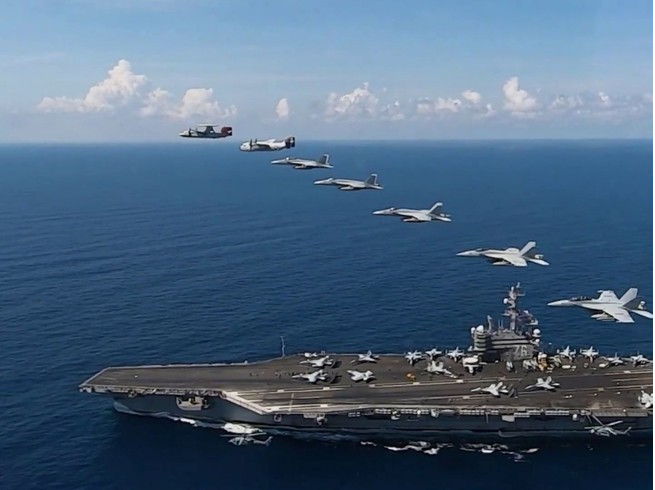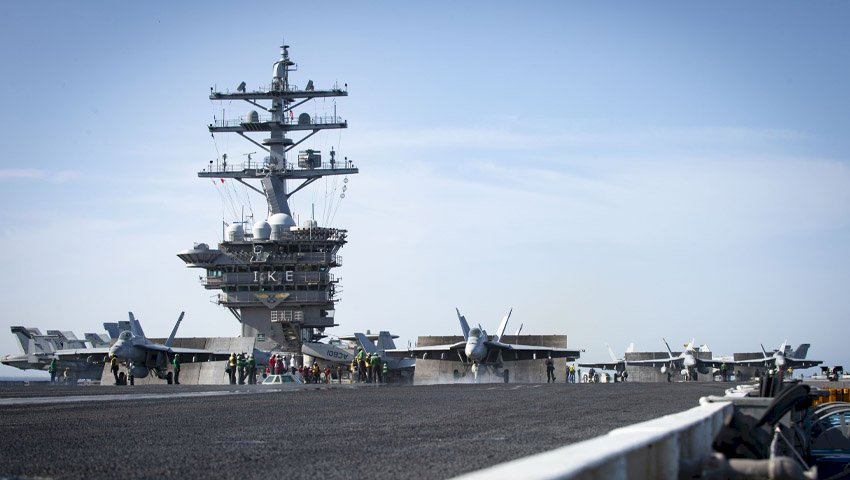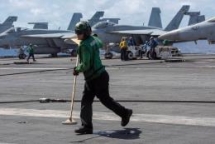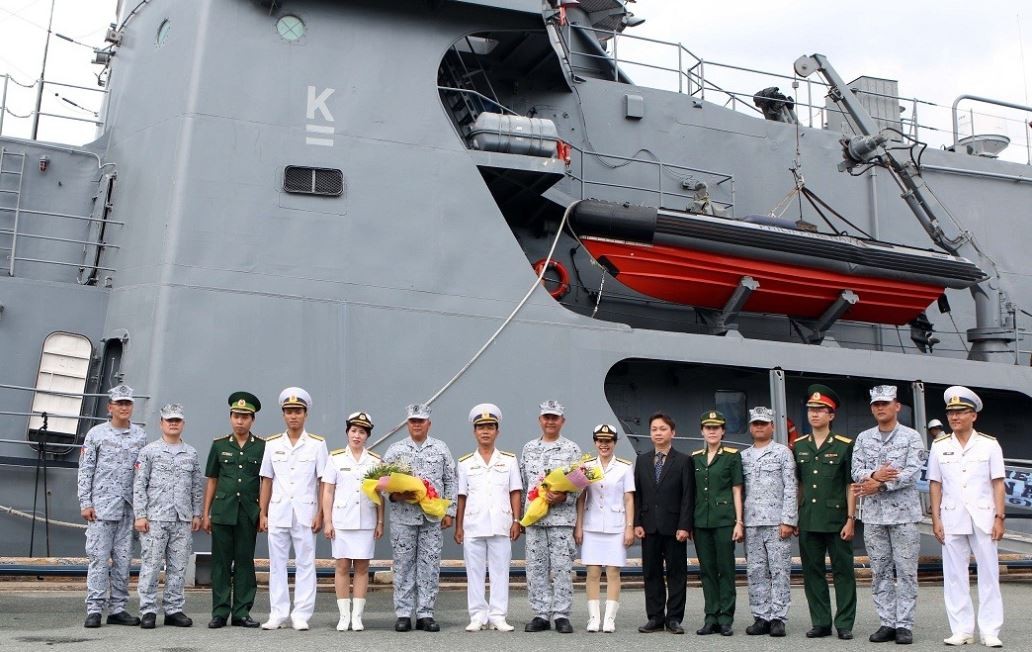Foreign Policy: Latest drill of US Navy’s carriers hints a message to China
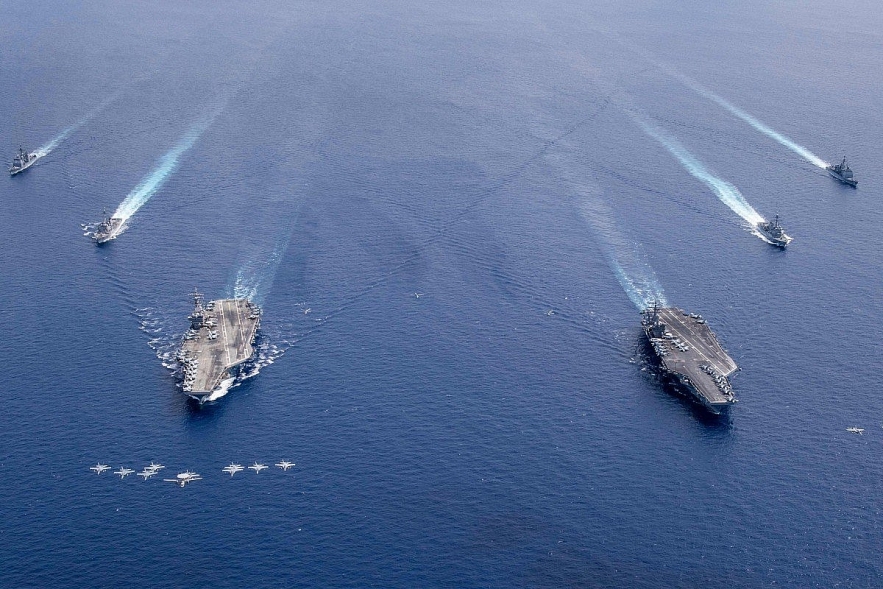 |
| Two aircraft carrier groups, the USS Nimitz and USS Ronald Reagan to conduct drills in the South China Sea last week. Photo: AFP/US Navy |
Over the weekend, the USS Ronald Reagan and the USS Nimitz sailed into the South China Sea, another challenge to China’s unlawful claims of maritime sovereignty in the area that have been consistently challenged by American allies.
More than a routine passage of the type meant to assert the right to free navigation, the exercise reportedly included the use of jets, reconnaissance planes, and helicopters, while Chinese sailors held competing drills Vietnam’s Hoang Sa (Paracel) Islands in Vietnam's East Sea.
Current and former defense officials worry that China has seized on the coronavirus pandemic to ramp up its efforts to militarize the so-called nine-dashed line, Beijing’s sweeping claim to sovereignty over the vast majority of the South China Sea, a conduit for trillions of dollars in annual trade and a potential motherlode of oil and natural gas.
Since earlier this year, while the United States and other countries were grappling with the spread of the pandemic, China has systematically stepped up its efforts to turn the South China Sea into a Chinese lake, installing floating and land-based monitoring systems on and around artificial islands, browbeating neighbors such as Vietnam and Malaysia that sought to drill for oil, and crossing sabers with Philippine warships.
China has also redoubled its administrative reach in the South China Sea, which could give it greater ability to turn atolls and islets into an extension of the mainland.
China’s ongoing aggression in the South China Sea has gotten a boost as the economic headwinds from the pandemic, which originated in China, has given Beijing more incentive to fuel nationalism through aggressive foreign-policy actions.
“It seems as though their foreign-policy adventurism has not in any way been clipped since coronavirus,” said Randall Schriver, who served as the Pentagon’s assistant secretary for Indo-Pacific security affairs until December 2019. “Stoking nationalism is helpful for a time when they’re struggling at home.”
The high-profile U.S. carrier operations are seen as a way to signal continued U.S. resolve, after another carrier, the USS Theodore Roosevelt, was laid up in Guam for two months after nearly 1,000 sailors contracted the virus.
“I think there were some questions after the Roosevelt was out of commission for a bit as to whether our capacity to do things was diminished,” said Schriver, who is now chairman of the Project 2049 Institute, a Washington-based think tank focused on U.S. policy in Asia.
“China is just pushing on all fronts,” another former defense official, who requested anonymity to speak candidly, told Foreign Policy. “I’m worried at some point that the dam is going to break somewhere. This business will get out of control.”
“The U.S. can do high-end multi-carrier operations, with the not so subtle dig at the Chinese that their carriers are not at the level,” said Bryan Clark, a senior fellow at the Hudson Institute who served on the Navy headquarters staff during his time on active duty.
China has two conventionally fueled aircraft carriers with less capability to conduct flight operations than the massive U.S. nuclear supercarriers. “It’s a way of demonstrating to the Chinese that they’re still far behind in this capability area,” Clark said.
US blasts China's threatenings
The U.S. sent the USS Ronald Reagan and USS Nimitz aircraft carriers ,U.S. Navy Nimitz-class aircraft carriers like USS Ronald Reagan and USS Nimitz are capable of operating more than 75 fixed-wing aircraft, depending on the configuration of the flight deck, to the South China Sea for military exercises as China ramps up its own drills in the area, drawing protests from Washington. The operations were meant to “support a free and open Indo-Pacific,” the U.S. Navy said.
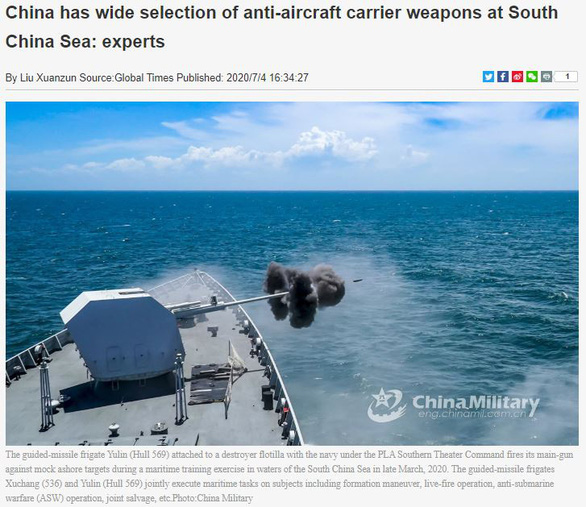 |
| Global Time's article, which mentioned China's military's power amid the US' exercise of three huge air carriers. Photo: Screen Capture. |
It did not specify the location of the exercises. “The purpose is to show an unambiguous signal to our partners and allies that we are committed to regional security and stability,“ said Admiral George M. Wikoff, who spoke to the Wall Street Journal about the exercises.
Part of the exercises this weekend involved the simulation of multiple carrier air wing sorties against enemy bases, according to the Wall Street Journal’s report. The exercises mark the first time the U.S. Navy has conducted such exercises in the South China Sea with two aircraft carriers.
After the US Navy deployed its two nuclear-powered aircraft carriers – USS Nimitz and USS Ronald Reagan – to conduct exercises in the South China Sea, Chinese propaganda outlet Global Times went into overdrive threatening the US carriers with DF-21D and DF-26 'aircraft carrier killer' missiles.
In an op-ed, a Chinese analyst said that China has a wide selection of anti-aircraft carrier weapons like DF-21D and DF-26 ‘aircraft carrier killer’ missiles adding that South China Sea is fully within grasp of the PLA; and that US aircraft carrier movement in the region is at the pleasure of PLA.
In a statement on July 9, the ministry claimed the United States had “carried out navigational hegemony” through repeated deployments of warships to the region, saying Washington was the biggest driver of militarisation in the strategic waterway.
“We hope the US will examine itself and stop its provocative military acts in the South China Sea, stop smearing and blaming the Chinese side for no reason, stop trying to drive a wedge between countries in the region, and stop creating this tense situation,” a spokesperson said on the ministry’s website.
Responding to this threat, the US Navy’s Chief of Information (CHINFO) shared a post taking a dig at the mouthpiece saying, “And yet, there they are” adding that the two US Navy aircraft carriers – USS Nimitz and USS Ronald Reagan – operating in the international waters of the South China Sea are not intimidated.
| China’s military drills opposed by Vietnam, Phillippines and the US The Vietnamese Ministry of Foreign Affairs just voiced strong opposition to China’s military exercises around Vietnam’s Hoang Sa (Paracel) Islands and requested that the northern neighboring country halt similar actions in the future during a regular press briefing in Hanoi. “That China has carried out military exercises in the Paracel Islands violates Vietnamese sovereignty over the Paracel Islands,” the Ministry's spokesperson Le Thi Thu Hang told reporters. She went on to say that the move runs in contrast to the spirit of the Declaration of Conduct of the Parties in the East Sea (DOC), further complicates the situation in the East Sea, and is conducive to the ongoing negotiation process between China and ASEAN on the Code of Conduct of the Parties in the East Sea (COC), as well as the maintenance of a peaceful and stable environment and co-operation in the sea Vietnam has communicated, handed over a note of opposition, and requested that the northern neighbor does not undertake similar actions in the future, Hang said. US News cited Philippine Defense Secretary Delfin Lorenzana has also raised alarm over China's move to hold military exercises in the South China Sea calling it “highly provocative”. While in an annoucement, Pentagon criticized the Chinese drills on Vietnam’s waters was "counter-productive to efforts at easing tensions and maintaining stability," Reuters cited. "America agrees with our Southeast Asian friends: The PRC's (People's Republic of China) military exercise in disputed waters of the South China Sea is highly provocative. We oppose Beijing's unlawful claims. Period ", US Secretary Mike Pompeo wrote on Twitter on July 3. |
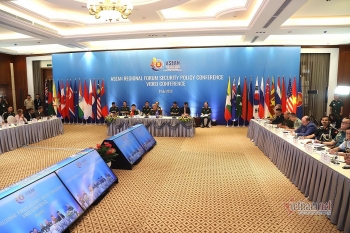 | International opinions regarding South China Sea dispute at ASEAN regional security conference On July 8th, in Hanoi, the Ministry of Defense organised a video conference of ASEAN Political-Security Community (ASPC), hosted by Lieutenant General Nguyen Chi Vinh, ... |
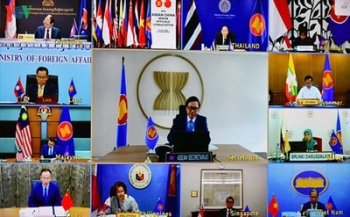 | ASEAN, China agree to go ahead with negotiations on Code of Conduct in East Sea ASEAN and China have reaffirmed their commitments to fully and seriously implementing the Declaration on the Conduct of Parties in the East Sea (DOC) and ... |
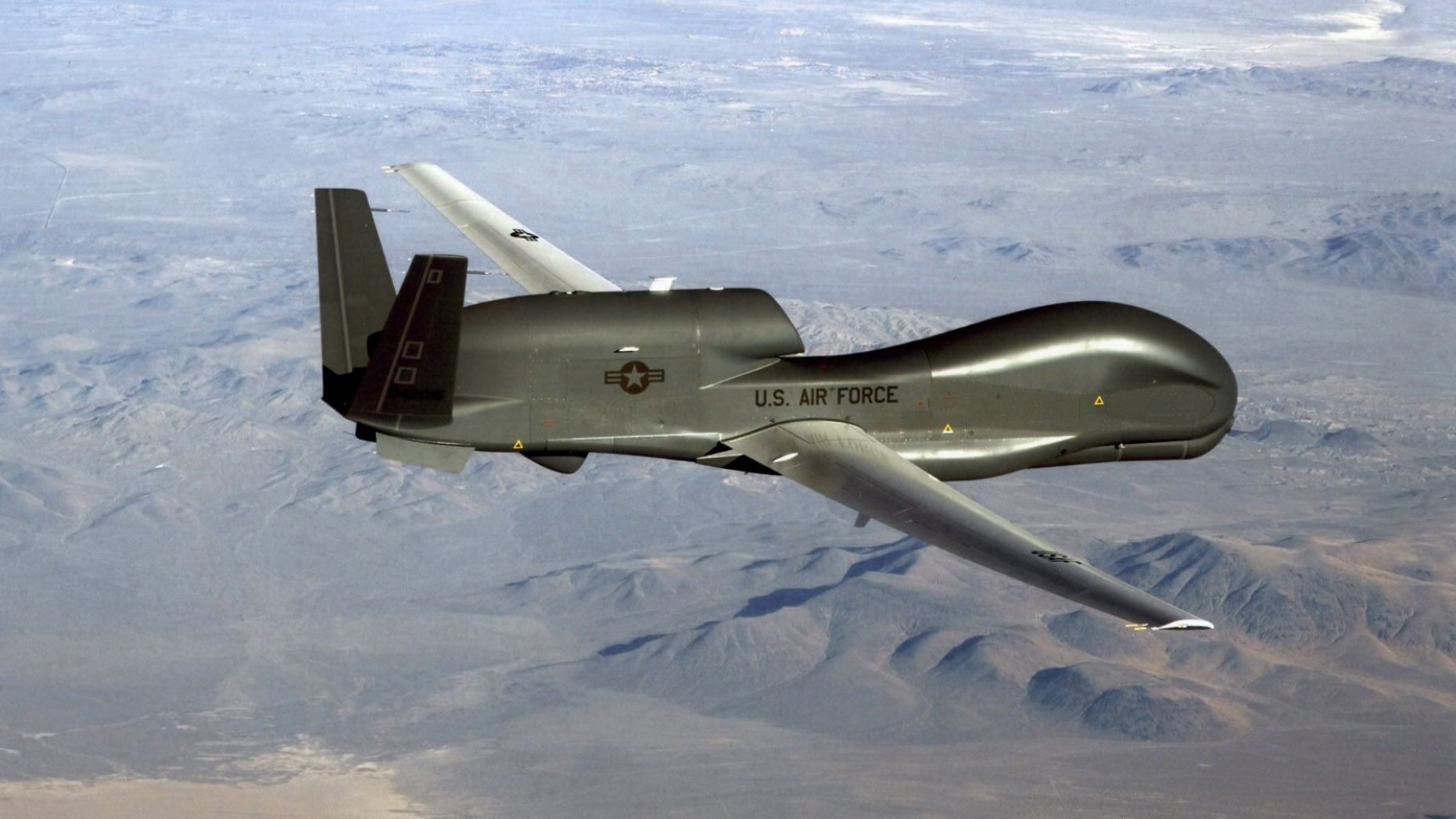 | US deploys spy drone and B-1B bombers to surveil South China Sea US Air Force has deployed B-1B bombers with the support of “God’s eyes” Global Hawk spy drones to sustain surveillance and deterrence missions the South ... |
Recommended
 World
World
Pakistan NCRC report explores emerging child rights issues
 World
World
"India has right to defend herself against terror," says German Foreign Minister, endorses Op Sindoor
 World
World
‘We stand with India’: Japan, UAE back New Delhi over its global outreach against terror
 World
World
'Action Was Entirely Justifiable': Former US NSA John Bolton Backs India's Right After Pahalgam Attack
 World
World
US, China Conclude Trade Talks with Positive Outcome
 World
World
Nifty, Sensex jumped more than 2% in opening as India-Pakistan tensions ease
 World
World
Easing of US-China Tariffs: Markets React Positively, Experts Remain Cautious
 World
World

